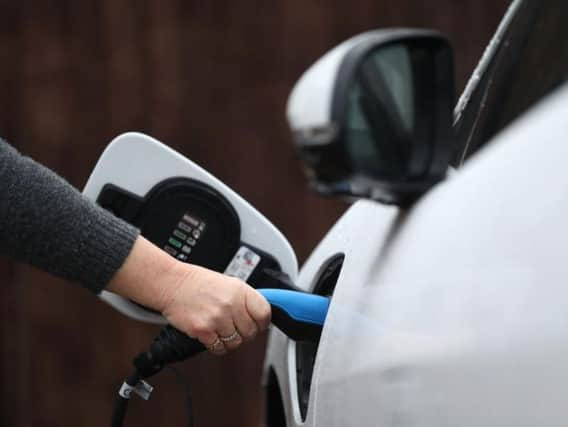How to power up an electric car revolution - Don Valley MP Nick Fletcher


Even as little as five years ago, electric cars were being produced but they were very expensive. Many may think that is still the case. I am not going to tell you that they are cheap, but apparently the cost that makes a car affordable these days is around £36,000 and, thankfully, that is where we are today.
That is the lower end of the market, yes, and £36,000 is still a large amount of money, but it is at least comparable to a diesel or petrol vehicle. Electric cars are also phenomenally cheap to run. The average cost of a 100-mile journey in a diesel is £12; in an electric vehicle it is £7. Servicing costs are also much lower. With fewer moving parts, there is a lot less to go wrong.
Advertisement
Hide AdAdvertisement
Hide AdIf cost is not holding us back, what is? Is it distance? Again, that used to be the case. However, most electric vehicles do much more than 200 miles now, and although that can drop in the winter months as batteries and occupants need to be kept warm, most vehicles will easily do 130 miles. As the average journey in the UK is less than 10 miles, range is not the big issue any more.
Electric vehicles are not like petrol or diesel vehicles, which a person would quite happily drive around with less than half a tank, and would definitely not fill up every day. However, with an electric vehicle, if you can, you should. There are two main reasons for that.
First, unlike with a petrol or diesel car, when your car is parked your EV will lose charge. That is because the batteries look after themselves with a slight amount of warmth, and there are lots of electronics that are always using power, so invariably you will lose around one per cent a day. If you have to make an emergency journey or take a spontaneous day out – when we are not in lockdown – unless you are fully charged, you are not going. I think it was Elon Musk who said, ABC — always be charging. That is okay if you have a home charge unit, but if not, we need multiple fast-charging units everywhere.
Secondly, no one wants to wait three to four hours for their car to be charged, so the charging points need to be at least 60kW, preferably 120kW. Thirdly, I should mention the reliability of charge points; that is so important. If you run out of charge, you are stuck – so charging points must be reliable.
Advertisement
Hide AdAdvertisement
Hide AdFinally, the payment system for the charge points needs to be contactless. People need to be able to drive up, plug in, pay when ready and drive away. Those are the four stumbling blocks: the lack of charging points, the size of those points, their unreliability and the lack of contactless facilities. How can we overcome that wall?
The announcement that no more internal combustion engines are to be registered after 2030 has definitely made the industry sit up and look at the issue more seriously. We are currently installing many charging points, but we need many more rapid units now.
We need to remove some of the existing incentives in the automobile sector and reinvest the money into EV charging point infrastructure.
The current voucher scheme for home charging is too complicated and does not really offer any huge savings to the end customer. As electric vehicles are becoming cheaper and cheaper to run, tax incentives will soon not be needed. If those moneys were redirected to further charging infrastructure projects, the automotive industry, which contributes much of our greenhouse gas emissions, could really lead the way to our net zero target.
Advertisement
Hide AdAdvertisement
Hide AdIt is obvious that fewer customers are buying electric vehicles due to that anxiety and the distance between charge points. That range anxiety is what is really stopping people buying these fantastic vehicles. The answer is to have high-powered rapid charging stations everywhere. A 300-mile-range vehicle with a high-powered charging can take as little as 20 minutes to give in excess of 150 miles’ charge. That is 75 miles in less than 10 minutes. That is obviously what we need — for EV charging points to be installed with the same frequency as petrol stations, well-lit and ideally under cover.
A perfect example is Gridserve in Essex. Its charging forecourt is clean, safe and has a lounge, shopping and a Costa Coffee. It has easy payment methods, too. Existing forecourt operators need to be taking this revolution seriously. With the Government’s backing in the initial stage, it could be great for the customer and also profitable enough for the private sector to get involved and really push it forward.